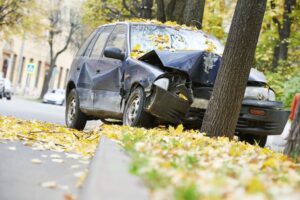Before a person or business can be held liable for the harm you experienced, negligence must be proven in a court of law. In the majority of injury or accident claims, such as but not limited to slip and fall cases, auto accidents, etc., this proving negligence is expected. The most common cause of a slip-and-fall accident is a slippery substance like ice, water, oil, or even spilled food that reduces the amount of friction between your feet and the ground, causing you to slip and fall. If you’ve ever had a slip and fall accident, make sure you’ll be able to get your slip and fall claims with the help of reputable lawyers.
In general, under the law of negligence, the person who acted negligently will be held legally responsible for any harm that results as a result of that person’s carelessness if that person’s careless act results in an injury to another person. Many disputes involving injuries or accidents use this methodology for identifying and analyzing faults.
Components of Negligence Claim
An accusation of negligence has four parts. The personal injury attorneys maintain that in order to establish negligence on the part of the defendant; the person who is allegedly at fault, the plaintiff; who is typically the injured party must establish the following four elements: duty, breach, causation, and damages.
Duty. When evaluating a negligence claim, the very first step is to determine whether the defendant owes the complainant a legal duty of care. The party at fault has a legal duty to the injured party under the circumstances. In other situations, the relationship between the plaintiff and defendant might create a legal obligation. Because a driver is expected to operate a vehicle safely and with a certain level of care, let’s just say that in the event of an accident, the defendant may likely owe the plaintiff a legal duty to act with adequate care in a particular situation.
Breach of Duty. The court will then try to determine whether the defendant violated a duty in any way by acting in a way that a reasonably prudent person would under comparable circumstances. The phrase “reasonably prudent person” is frequently used as a legal term to describe how a typical person would act responsibly in a particular situation. Simply put, if the average person knew what the defendant knew at the time, he or she would have likely known that someone might have been hurt as a result of their actions and, as a result, would have acted differently than the defendant did in that circumstance.
Causation. The third requirement is for the plaintiff to demonstrate that the defendant’s carelessness resulted in their harm. In all honesty, someone may have been careless, but the plaintiff can only be compensated if this error somehow led to the injury. Saying that, it wouldn’t be reasonable to sue someone who was texting and driving negligently for an unrelated collision that occurred across the street.
This aspect also considers whether the accused could have anticipated that their actions might have resulted in harm. If the defendant’s actions in any way resulted in the plaintiff suffering harm as a result of an unforeseen or random event, the harm would probably be deemed unforeseeable and the defendant would probably not be held accountable.
Damages. Damages are the fourth and final component of a negligence case. This requirement assumes that the court will be able to compensate the complainant for their harm, and that compensation will typically take the form of monetary compensation for costs such as property repair and medical care.
Conclusion
Injury brought on by carelessness should not be disregarded. You’ll be assisted in the process if you are aware of your rights and retain the services of a personal injury attorney in Lewisville, TX who is knowledgeable about the negligence claim procedure. You should act right away because you are entitled to compensation.




